Co-authored with Katrina Ben, Senior Conservator, Books
State Library Victoria’s conservators enjoy special access to many wonderful collections and take great pride in helping to facilitate access for all. If an item is particularly vulnerable or rare, this often involves stabilisation so that it can be safely photographed for digitisation. Recently, the Conservation team were asked to prepare such a collection for an exciting new online project: Beyond the Book: A digital journey through the John Emmerson Collection.
The Emmerson collection is a highly significant collection of rare English printed works, featuring books and pamphlets from the 15th to 18th centuries. Since 2016, our conservators have prepared 102 Emmerson volumes for various iterations of the Library’s permanent exhibition World of the Book.
Now viewers can appreciate the finer details of select Emmerson works up close. The virtual exhibition Beyond the Book presents high resolution images of 89 unique items from the Emmerson collection, including a range of rare books, flat works and breathtaking decorative bindings. Of this number, seven bindings received special treatment utilising a technique called photogrammetry to produce interactive 3D digital models.
Conservation
Before the Emmerson items could be photographed, they first needed to be examined in Conservation. This included assessing condition, undertaking conservation treatment where required, constructing custom supports, and providing advice and assistance in safe handling practices. This process took just under a year.
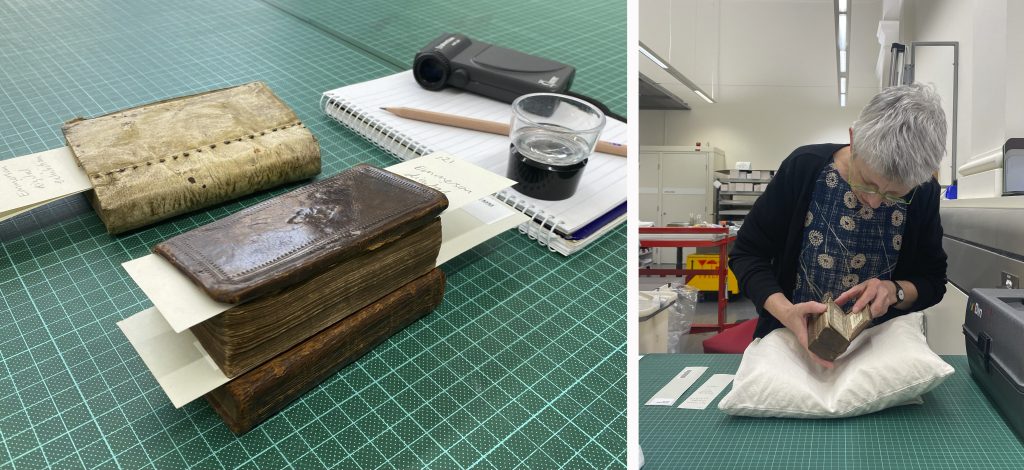
Conservation assessment
The greatest challenge was ensuring the items could be successfully imaged without putting them at risk of damage. Many of the books in the Emmerson collection are in original leather bindings created from as early as the 16th century. The leather is typically adhered directly to the book spine, which can restrict how much the book can be opened without creating points of stress and damage.
Our conservators needed to plan how each item would be supported throughout the imaging process. Some books had custom book cradles made for them, others were supported over strategically placed map weights. In most cases, gentle restraint using polyethylene strapping was required to help hold the volumes open for photography.
Conservation treatment
In most cases, no treatment, or only very minimal treatment was required to stabilise the items for photography. Tears that might snag during handling were repaired, but ‘ingrained’ material changes like soiling or staining were preserved as an important record of how the collection was used over time.
However, there was one exception to this rule. England’s black tribunal: or, The Royal martyrs. Being the characters of King Charles the First, and the nobility that suffered for him (RAREEMM 837/1), a 17th century broadside featuring 21 woodcut portraits, was in a vulnerable state.
England’s black tribunal was produced in the decade following the 1649 execution of Charles I and reflects the developing sense of the king as a martyr. It features a central portrait of Charles I surrounded by 20 portraits of the nobility, each above eight lines of verse, with a thick, black mourning border. In the lower margin we learn the broadside was written by ‘the Right Honourable the Marquess of Montrose’, who is depicted at the lower left of Charles I.
![England’s black tribunal, [1658?], recto and verso, using raking light to highlight condition before treatment; RAREEMM 837/1](https://blogs.slv.vic.gov.au/wp-content/uploads/2023/09/4_Before_raking-1024x616.jpg)
Widespread creases, edge tears, and old repairs were not only impacting on condition, but were restricting legibility of the text. To stabilise the broadside for successful imaging, England’s black tribunal needed some careful conservation work.
Following examination, documentation and testing, it was determined that the broadside would benefit from an immersion wash. This would help to release any soluble deterioration products, facilitate the removal of problematic repairs, and encourage the creases to relax.
First, any loose dirt was removed from the surface and vulnerable areas were temporarily reinforced with kozo paper and wheat starch paste. The broadside was then humidified and immersed in a customised solution for a short, gentle wash.
While still wet, the old repairs were safely removed to be preserved as evidence of its history. The broadside and repairs were then pressed between felts until dry.
The temporary mends were then removed and replaced with inconspicuous archival tissue repairs with the assistance of a light table. Finally, the broadside was immersed in a rinsing solution to remove any residues from the initial wash and pressed for two weeks to dry.
With treatment complete, England’s black tribunal was ready for photography.
But that was not the end of its journey! Along with a handful of other highlights from the digital exhibition, England’s black tribunal was also selected for display in the World of the Book exhibition. Following imaging, the broadside was inlaid in archival paper to ensure its safe handling into the future, then mounted and framed for display.
Working with Collection Access
In consultation with the Digital Production Senior Technician, each photography session was carefully pre-planned, so that nothing was left to chance.
At the beginning of each session, our book conservators delivered a small selection of Emmerson items to the imaging studio, with all necessary supports and equipment. The team then stayed on hand throughout the process to assist with handling and placement.
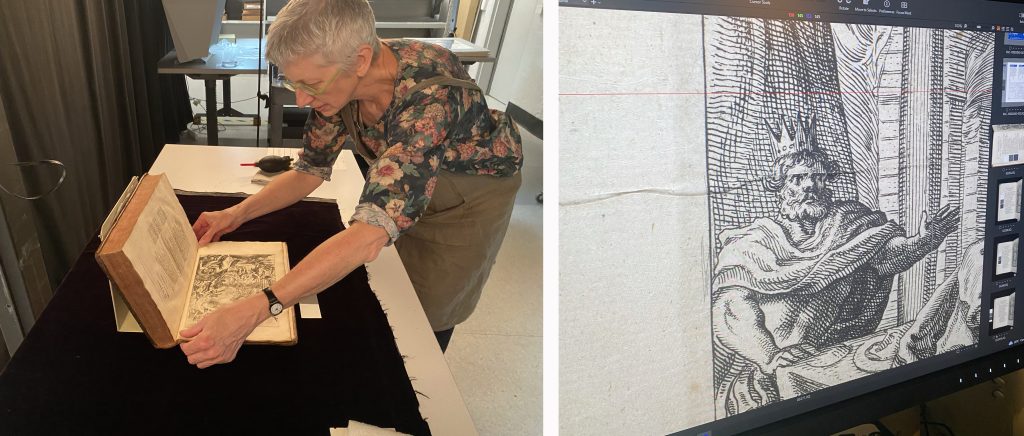
In most cases it was necessary to restrain the book pages during photography. This was achieved using polyethylene strapping carefully positioned to ensure there were no reflections from the photographic lights. In the case of a 16th century legal text, Littletons tenures in English (RAREEMM 164/11), a book conservator needed to physically hold the textblock open for each shot!

The photographic process was slow and exacting, but the results were worth the effort! To learn more about this incredible behind-the-scenes work, click through to the blog 3D modelling for ‘Beyond the Book’, bringing rare books to life by photogrammetry technique here. Then feast your eyes on these rare treasures in high resolution at Beyond the Book: A digital journey through the John Emmerson Collection.
All images provided by Albertine Hamilton (Conservator, Paper) unless otherwise noted.



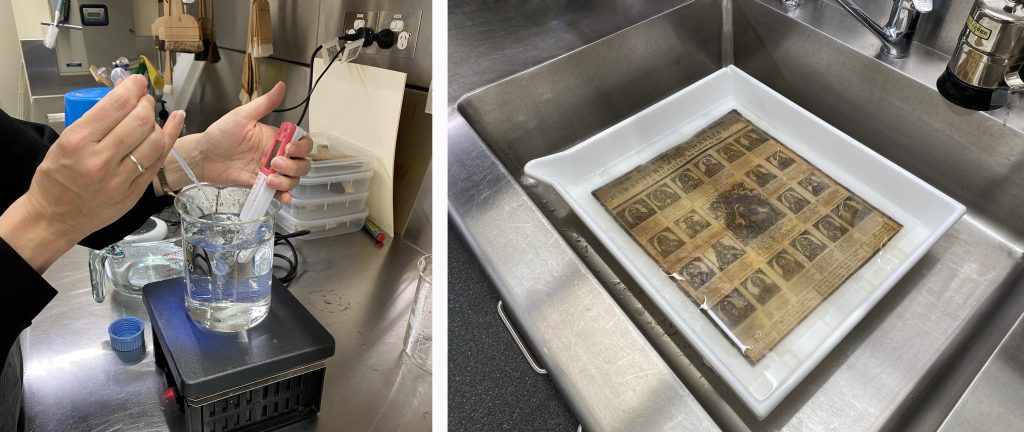
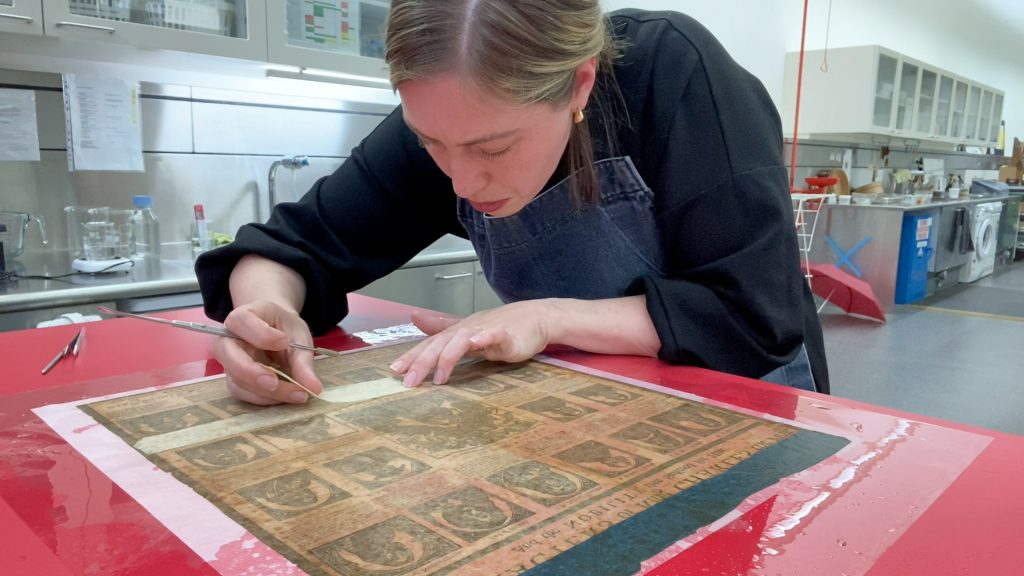

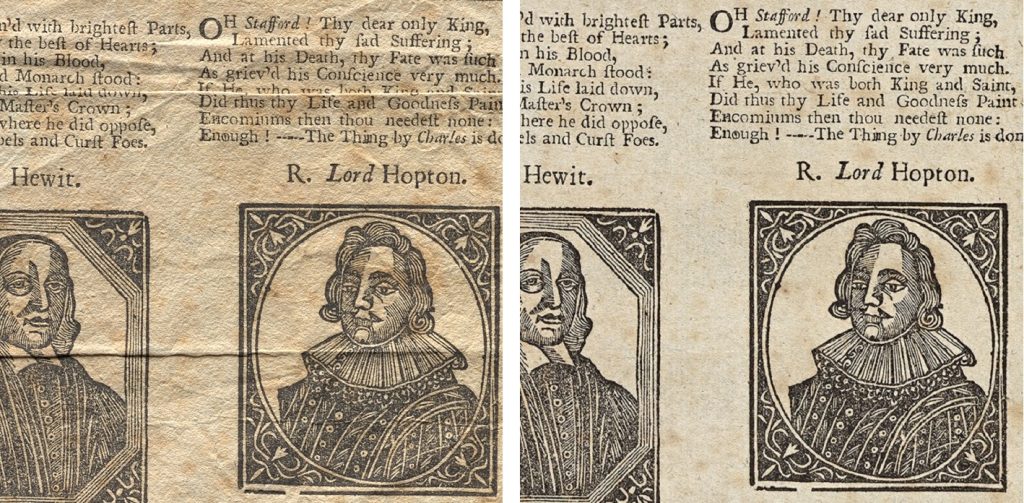
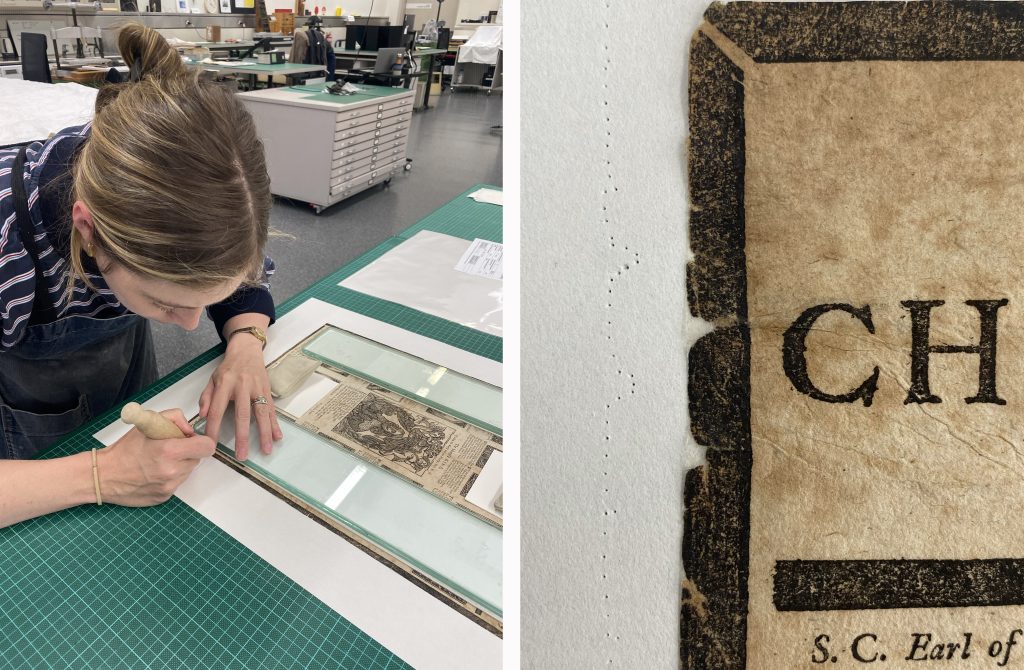
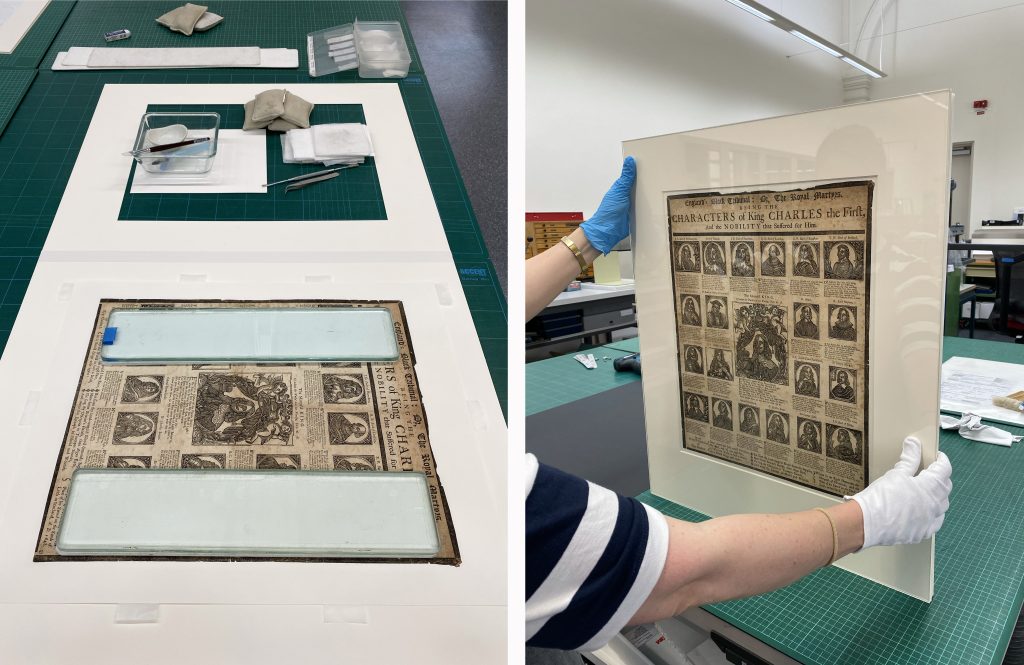


Thanks for this wonderfully informative article revealing the highly specialised work that has gone into making this collection available. It’s fascinating to see what happens ‘behind the scenes’ – also the amount of collaboration that’s required from so many staff to exhibit this material. What a wonderful collection!
How true
A great overview of the preservation required and how a repair, perhaps once considered to be the best that could be achieved, can be carefully wound back and restored. So much meticulous work for a single photograph, let alone a volume. Thank you for the insights.
Fascinating to know what goes on behind the scenes and the lengths the conservators go to to ensure the public can have access.
Wonderful images and story – thank you for making it available…
I’m wondering about the use of gloves when handling the materials. Back in the dark age when I trained, the ‘rule’ was to always handle materials with cotton gloves to avoid the transference of oil etc. Then there was a shift to using nitrate gloves. What are the current recommendations? Still sends shudders down my spine when I see all this beautiful ‘stuff’ handled without gloves…I need to get with the times!
Thank you for your kind comments, Amanda. You are not the first to flinch at our use of bare hands! The question of gloves or no gloves is one of our most frequently asked. While the wearing of white cotton gloves has long been synonymous with handling rare and valuable collection items, recent studies have shown they do not offer significant advantage, and in some cases can cause damage. As well as reducing our sense of touch and dexterity, cotton gloves can cause damage to fragile or brittle pages and transfer dirt. We have phased out cotton gloves in our reading rooms on this basis. Instead, and most importantly, we ask staff and patrons to wash and dry their hands regularly. Of course, there are still instances where gloves should be worn and the type of glove will depend on the material being handled, e.g., photographic materials and metals require nitrile gloves. Staff are primed and ready to advise in these situations. I hope this answers your question!
It could all sound ordinary, or ho hum, until one sees the before and after images.
What startling changes, and how intricate the work.
Had I known what conservation was in my teens, it would have definitely been a career I would have chosen. Thank you for these articles on conservation. It is fascinating to see it in action and the meticulous care taken to preserve history. Well done.